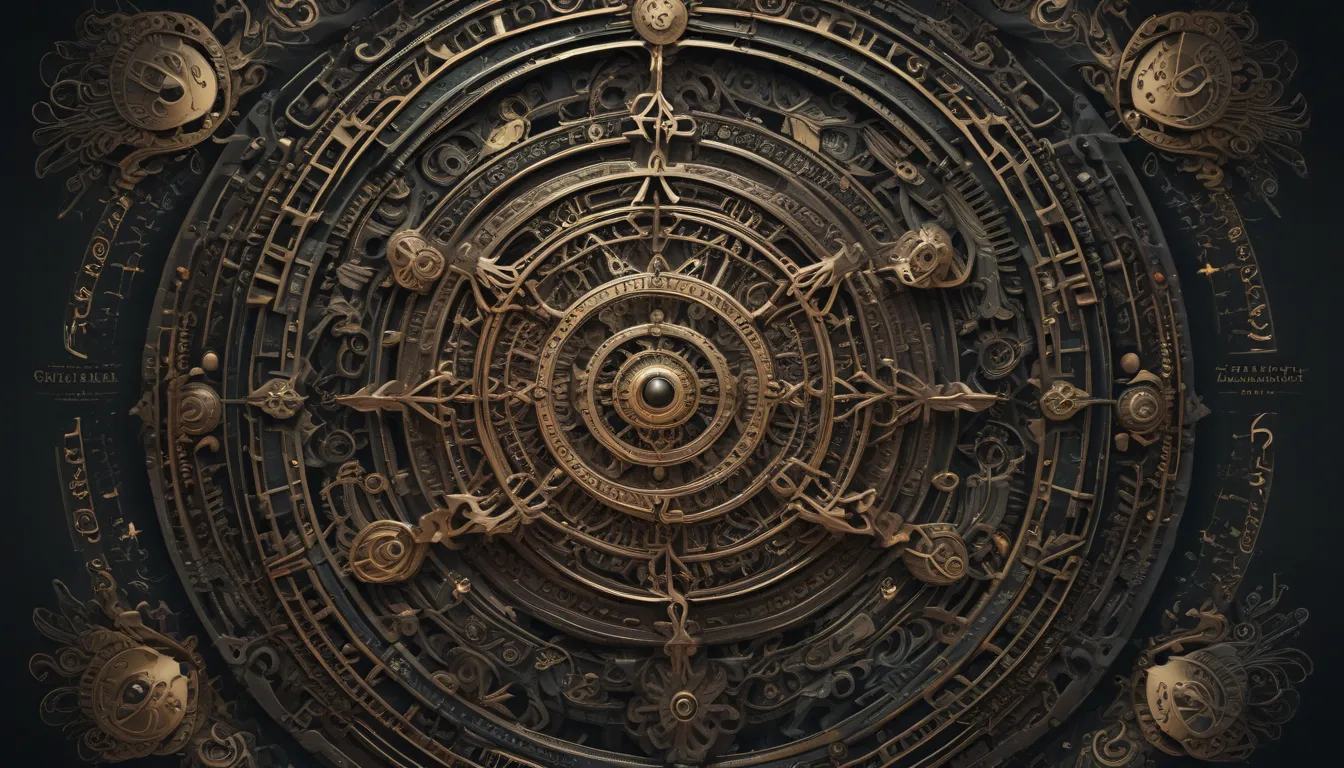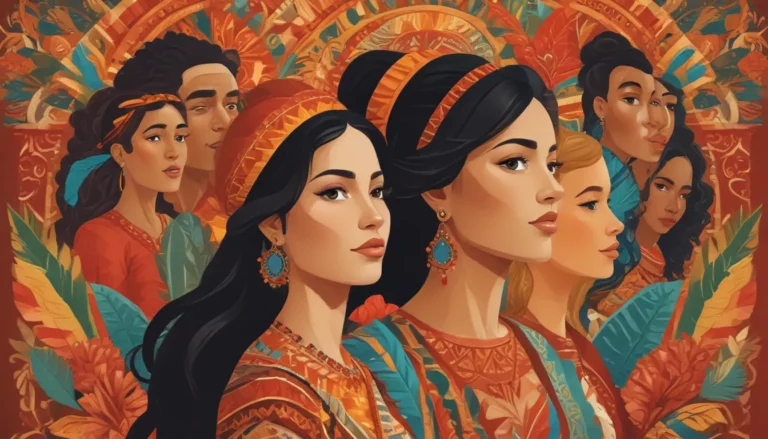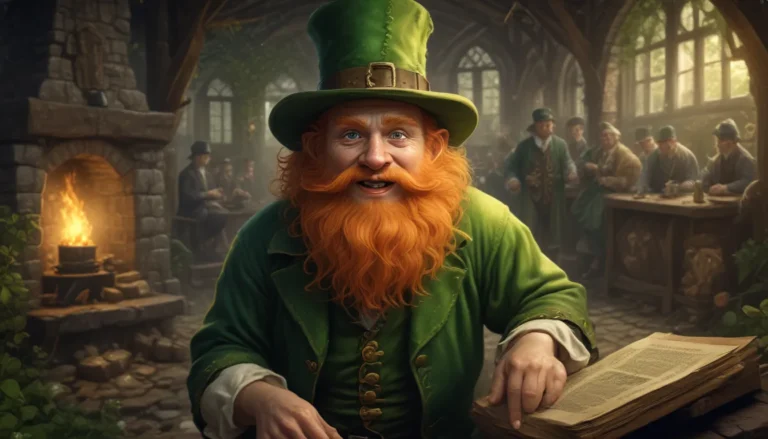The images in our articles may not match the content exactly. They are used to grab your attention, not to show the exact details in the text. The images complement the text but do not replace it.
Symbols are more than just shapes or designs; they are the threads that connect us to history, culture, and emotion. From ancient hieroglyphs to modern logos, symbols transcend language barriers to convey complex ideas in a visually digestible format. Whether it’s the heart symbol representing love or the peace sign advocating for nuclear disarmament, symbols speak volumes without uttering a single word. Join us on a journey to unravel the mysteries behind some of the most iconic symbols, exploring their meanings, uses, and origins.
The Language of Symbols
Symbols are the building blocks of communication, transcending linguistic boundaries to convey messages and emotions universally. Let’s delve into some intriguing facts about symbols and their profound significance in our lives.
1. Heart Symbol: A Tale of Love and Fidelity
The heart symbol, a universal sign of love and affection, traces its origins back to ancient times when it represented fidelity through the shape of ivy leaves. What we now recognize as a symbol of love has a rich history that speaks to the enduring power of devotion.
2. Swastika: From Good Fortune to Infamy
Once a symbol of good fortune and well-being in various cultures, including Hinduism and Buddhism, the swastika took a dark turn during the Nazi regime. Despite its tainted reputation today, its origins remind us of the complexities and evolution of symbols over time.
3. Peace Sign: A Call for Nuclear Disarmament
The peace sign, a simple circle with three lines, was born in 1958 as a symbol for the British nuclear disarmament movement. By combining semaphore signals for “N” and “D,” it stood for a powerful message of peace and unity amidst global tensions.
Symbols in Our Daily Lives
Symbols are ingrained in our everyday experiences, guiding our actions, influencing our decisions, and shaping our understanding of the world. Let’s explore how symbols permeate various aspects of our daily routines.
1. Traffic Lights: The Universal Language of Road Safety
From green for go to red for stop, traffic lights use universally recognized symbols to navigate roads seamlessly across different languages and cultures. These visual cues ensure safety and order amidst diverse drivers on the road.
2. Emoji: The Digital Language of Emotions
With over 3,000 emoji covering a wide range of emotions, objects, and concepts, these digital symbols have become a language of their own. From texting to social media, emojis add depth and nuance to our online conversations.
3. Logos: Symbols of Brand Identity
Logos serve as symbols that represent companies or products, embodying values, principles, and promises. The Apple logo, known for innovation and quality, is a prime example of how symbols can evoke trust and recognition in the business world.
Historical Symbols: Unveiling the Past
Throughout history, symbols have been instrumental in communication, storytelling, and cultural preservation. Let’s journey through time to uncover the stories behind some of the most iconic historical symbols.
1. Egyptian Hieroglyphs: The Writing of Ancient Civilization
Consisting of over 700 symbols representing sounds, objects, or concepts, Egyptian hieroglyphs were fundamental to monumental and religious texts in one of the earliest writing systems known to humanity.
2. The Cross: A Symbol of Faith and Hope
Central to Christianity, the cross symbolizes the crucifixion of Jesus Christ and serves as a beacon of faith, hope, and love for millions of believers worldwide. Its enduring presence speaks to the power of symbols in shaping religious identities.
3. Jolly Roger: The Pirate’s Symbol of Defiance
The skull and crossbones flag, known as the Jolly Roger, instilled fear in the hearts of pirates’ victims while symbolizing defiance against societal norms. This notorious symbol embodies rebellion and resistance in maritime history.
Symbols in Art and Literature: Layers of Meaning
Artists and writers often employ symbols to add depth and complexity to their works, engaging audiences on multiple levels. Let’s explore the symbolic language of art and literature.
1. Mockingbird: Symbol of Innocence and Injustice
In Harper Lee’s “To Kill a Mockingbird,” the mockingbird symbolizes innocence and beauty, tragically destroyed by a society plagued with injustice. This poignant symbol invites readers to contemplate the fragility of purity in a flawed world.
2. The Color Green: Nature, Envy, and the American Dream
While green symbolizes nature, growth, and renewal in many contexts, F. Scott Fitzgerald’s “The Great Gatsby” imbues it with the darker connotations of envy and the unattainable pursuit of the American Dream. This dual symbolism showcases the complexity of colors in literature.
3. Dove of Peace: Symbol of Hope and Harmony
The dove, a timeless symbol of peace and purity, is immortalized in Pablo Picasso’s “Dove of Peace.” This iconic artwork captures the essence of harmony and unity, emphasizing the power of symbols to inspire positive change.
Symbols and Technology: Pioneers of the Digital Age
In the digital era, symbols have acquired new meanings and applications, becoming indispensable elements of our technological landscape. Let’s delve into the symbiotic relationship between symbols and technology.
1. Power Symbol: The Binary Code of On and Off
Derived from the binary system, the power symbol—a line inside a circle—signifies the states of power on (1) and power off (0). This simple yet potent symbol encapsulates the essence of technological functionality in everyday devices.
2. Wi-Fi Symbols: Navigating the Wireless World
Wi-Fi symbols, represented by concentric arcs resembling radio waves, indicate the strength of wireless internet connections in public spaces and electronic devices. These ubiquitous symbols facilitate seamless connectivity in our digital interactions.
3. Hashtag: From IT Code to Social Media
Originally utilized in IT for various purposes, the hashtag gained popularity on social media platforms as a means to categorize content, streamline searches, and foster online communities. This symbol has revolutionized the way we engage with digital content.
Cultural Symbols: Embodying Traditions and Values
Symbols often serve as vessels of cultural significance, embodying the beliefs, traditions, and values of diverse societies. Let’s explore the cultural tapestry of symbols across different traditions.
1. Dragon: The Symbol of Power and Fortune in Chinese Culture
In Chinese mythology, the dragon symbolizes power, strength, and good luck, playing a central role in cultural celebrations like the Chinese New Year. This mythical creature embodies auspicious qualities in Chinese folklore.
2. Bald Eagle: Emblem of Freedom and Strength in America
As the national bird of the United States, the bald eagle symbolizes freedom, strength, and the indomitable American spirit. Its majestic presence on seals and currency underscores its symbolic significance in American identity.
3. Lotus Flower: Purity and Enlightenment in Eastern Traditions
Significant in Hinduism and Buddhism, the lotus flower symbolizes purity, enlightenment, and rebirth, serving as a potent visual motif in religious art and scriptures. This sacred symbol evokes transcendence and spiritual awakening in Eastern philosophies.
Symbols in Nature: Harmony and Metaphor
Nature abounds with symbols, from the changing seasons to the animals that embody various qualities and attributes. Let’s explore the symbolic language of nature and its intertwined relationship with human expression.
1. Seasons: Metaphors of Renewal and Transformation
Seasons serve as potent symbols in literature and art, with spring symbolizing rebirth and renewal, while autumn signifies maturity and change. These seasonal metaphors mirror the cycles of life and the eternal flux of the natural world.
2. Owl: Symbol of Wisdom and Mystery
The owl, revered for its wisdom and knowledge in many cultures, symbolizes guardianship and intelligence in literature and folklore. Often depicted as a sage or harbinger of secrets, the owl embodies the enigmatic allure of ancient wisdom.
3. Rivers: Symbols of Life and Passage
Rivers symbolize life, change, and the inexorable passage of time in literature and mythology, serving as sources of sustenance and transformation. These flowing symbols embody the ebb and flow of existence, resonating with themes of journey and metamorphosis.
The Enduring Legacy of Symbols
Symbols wield immense power, uniting people, sparking change, and articulating complex ideas with elegant simplicity. Let’s uncover the diverse realms in which symbols exert their influence and shape our perceptions of the world.
1. National Flags: Icons of Identity and Patriotism
National flags resonate as potent symbols of collective identity, pride, and patriotism, symbolically uniting citizens under a common banner. These iconic emblems evoke a sense of belonging and allegiance to a shared heritage.
2. Rainbow Flag: A Beacon of LGBTQ+ Pride
The rainbow flag, symbolizing LGBTQ+ pride and diversity, has emerged as a global symbol of inclusivity, love, and the ongoing struggle for equality. This vibrant symbol embodies the spirit of acceptance and solidarity within the queer community and beyond.
3. Graffiti and Street Art: Symbols of Resistance and Expression
Graffiti and street art often incorporate symbols to convey messages of resistance, hope, and community, transforming public spaces into vibrant canvases of self-expression. These visual symbols serve as poignant reflections of societal values and dissent.
4. Mathematics and Science Symbols: Gateways to Understanding
Symbols like π (pi) and the DNA helix represent foundational concepts and discoveries in mathematics and science, shaping our knowledge of the world. These abstract symbols serve as conduits to complex ideas and principles in academic disciplines.
5. Religious Symbols: Bridges to the Divine
Religious symbols like the Star of David, the Crescent Moon, and the Om connect believers to their faith traditions, encapsulating spiritual beliefs and practices. These sacred symbols serve as conduits to the divine realm, affirming individual and communal faith identities.
6. Brand Symbols: Conveyors of Trust and Quality
Brands leverage symbols to forge emotional connections with consumers, with logos and mascots embodying qualities of trust, innovation, or luxury. These visual symbols serve as touchstones for brand recognition and loyalty in the marketplace.
7. Political Symbols: Emblems of Ideals and Aspirations
Political symbols, such as the raised fist of solidarity or the peace dove, carry potent messages of resistance, unity, and hope for a better future. These iconic emblems embody the aspirations and ideals of diverse social and political movements.
8. Tattoo Symbols: Personal Expressions of Identity
Tattoos serve as personal symbols, representing milestones, memories, or deeply held beliefs etched onto the skin as enduring expressions of identity. These body art symbols convey narratives of selfhood and significance for individuals.
9. Sports Symbols: Commemorating Achievements and Excellence
Trophies and medals in sports symbolize achievement, excellence, and the culmination of hard work and dedication in athletic pursuits. These symbolic awards serve as tangible reminders of athletic prowess and competitive triumphs.
10. Dream Symbols: Portals to the Subconscious
Symbols in dreams, such as falling, flying, or being chased, are interpreted as manifestations of subconscious thoughts and desires, holding universal meanings across cultures. These dream symbols serve as portals to the hidden realms of the psyche.
11. Cryptography Symbols: Guardians of Privacy and Security
Cryptography employs symbols to encode and decode messages, safeguarding privacy and security in communication channels. These cryptic symbols ensure the confidentiality of sensitive information in digital exchanges.
12. Astrological Symbols: Guides to Personality and Destiny
Astrological symbols representing the twelve zodiac signs influence people’s personalities and destinies, imbuing them with distinctive characteristics, strengths, and weaknesses. These celestial symbols serve as guides to self-discovery and cosmic interconnectedness.
13. Ritual Symbols: Markers of Life’s Transitions
Symbols play a vital role in rituals and ceremonies, from weddings to funerals, marking significant moments in life with meaningful gestures and objects. These ritual symbols imbue life events with spiritual significance and communal resonance.
14. Fashion Symbols: Expressions of Style and Identity
Symbols in fashion communicate personal style, social status, and cultural affiliations, with certain brands, patterns, and colors symbolizing diverse attitudes and values. These sartorial symbols reflect individual identities and societal trends in the realm of style.
Reflecting on the Legacy of Symbols
Symbols are the silent storytellers of our visual world, weaving narratives of history, culture, and emotion with elegance and grace. From national flags to religious emblems, each symbol carries a unique resonance, speaking to the shared human experience that binds us together. As you encounter familiar symbols or discover new ones, take a moment to ponder their significance, their journey through time, and the stories they encapsulate. Symbols are more than ink on a page or pixels on a screen; they are windows to the soul, offering glimpses into the profound depths of human creativity and connectivity. Embrace the language of symbols, for in their eloquent simplicity lies a profound tapestry of meaning and memory that enriches our lives in ways both seen and unseen.






